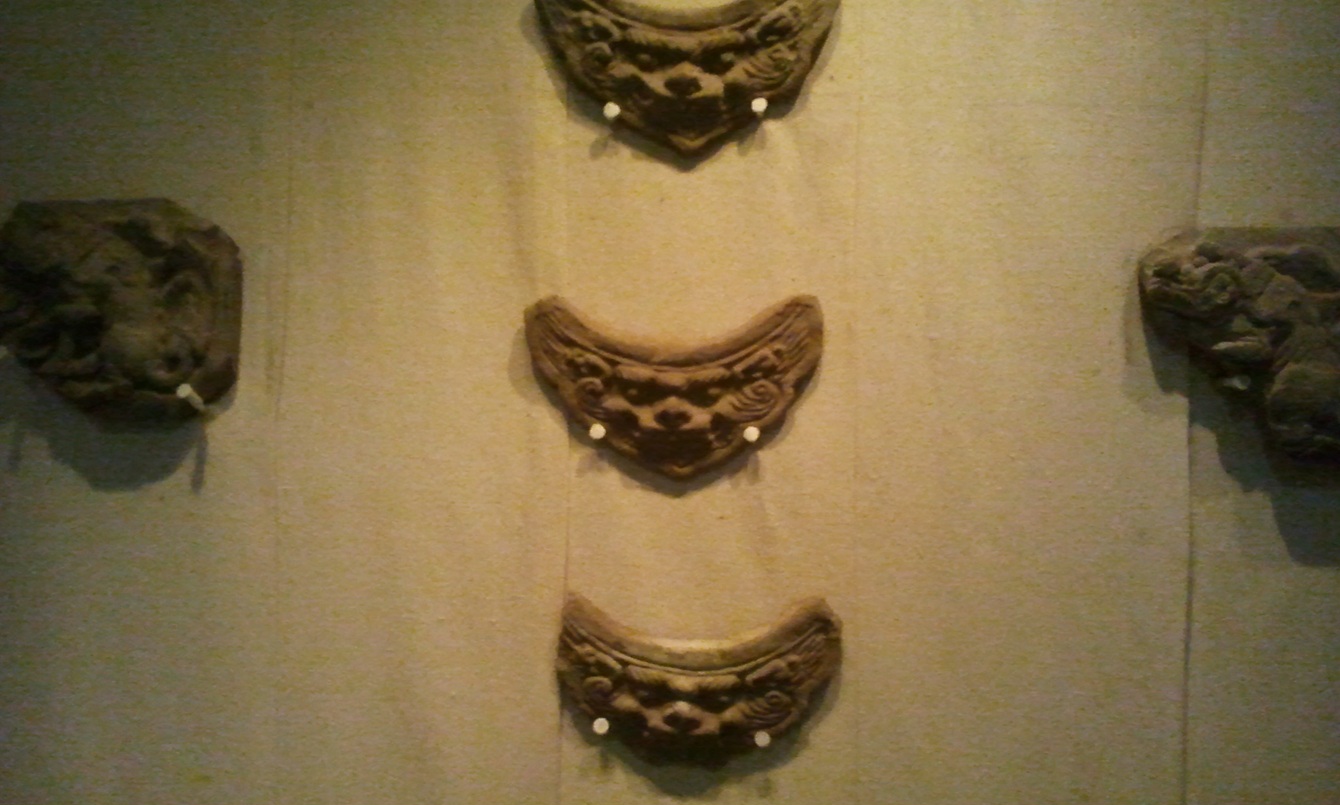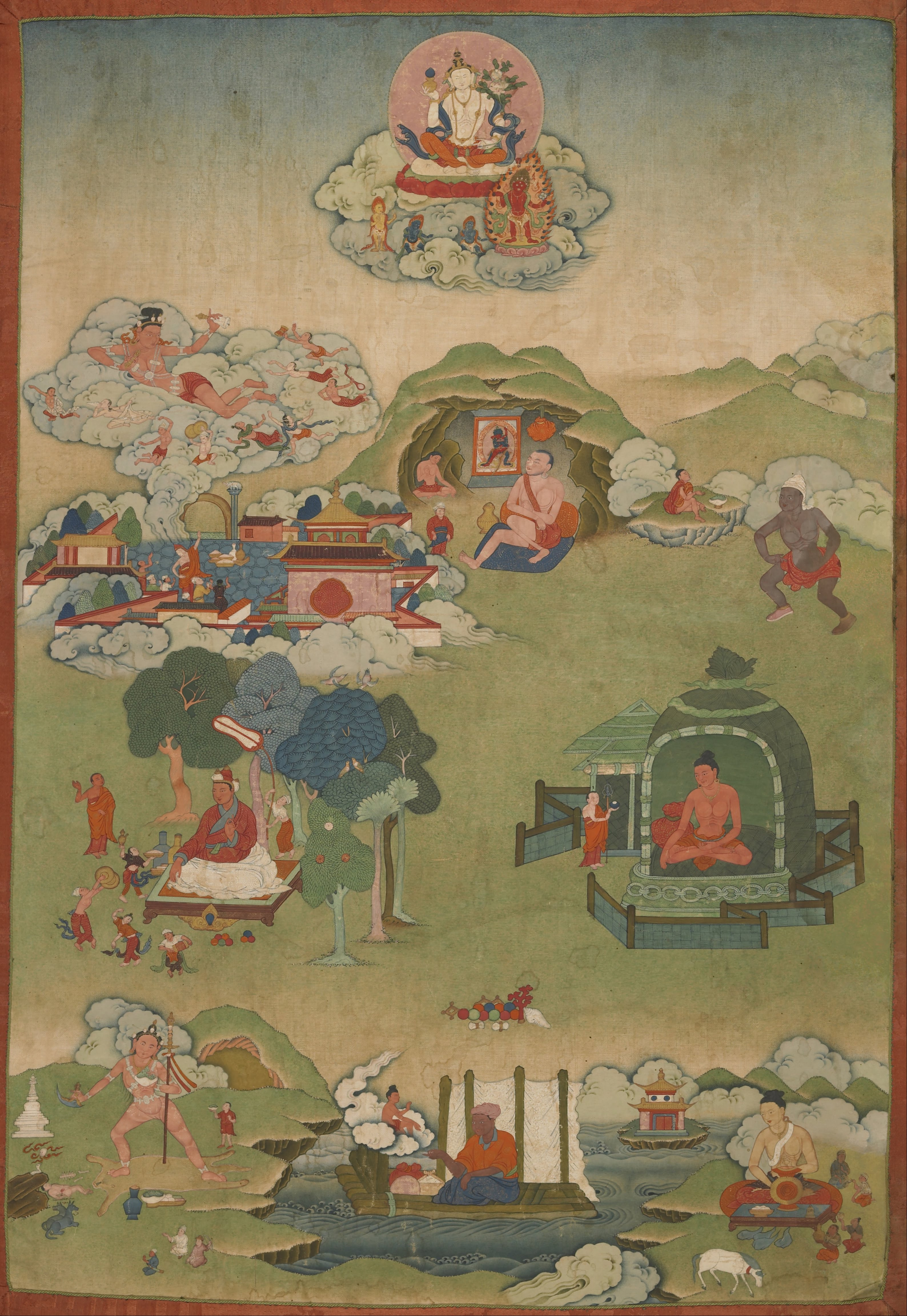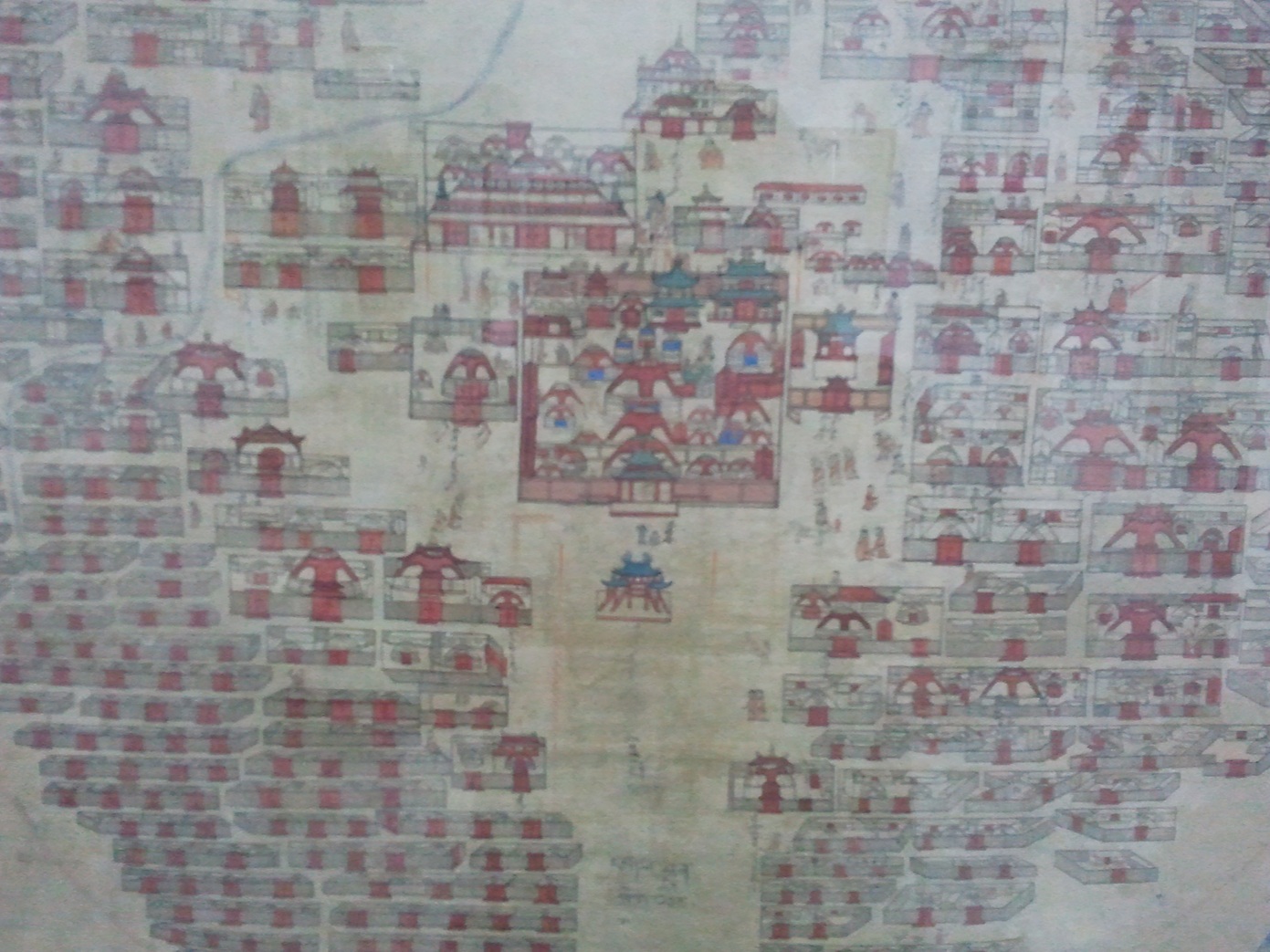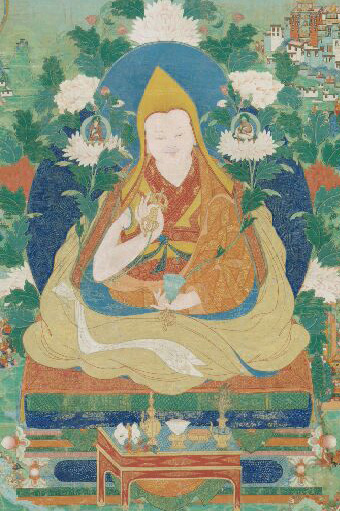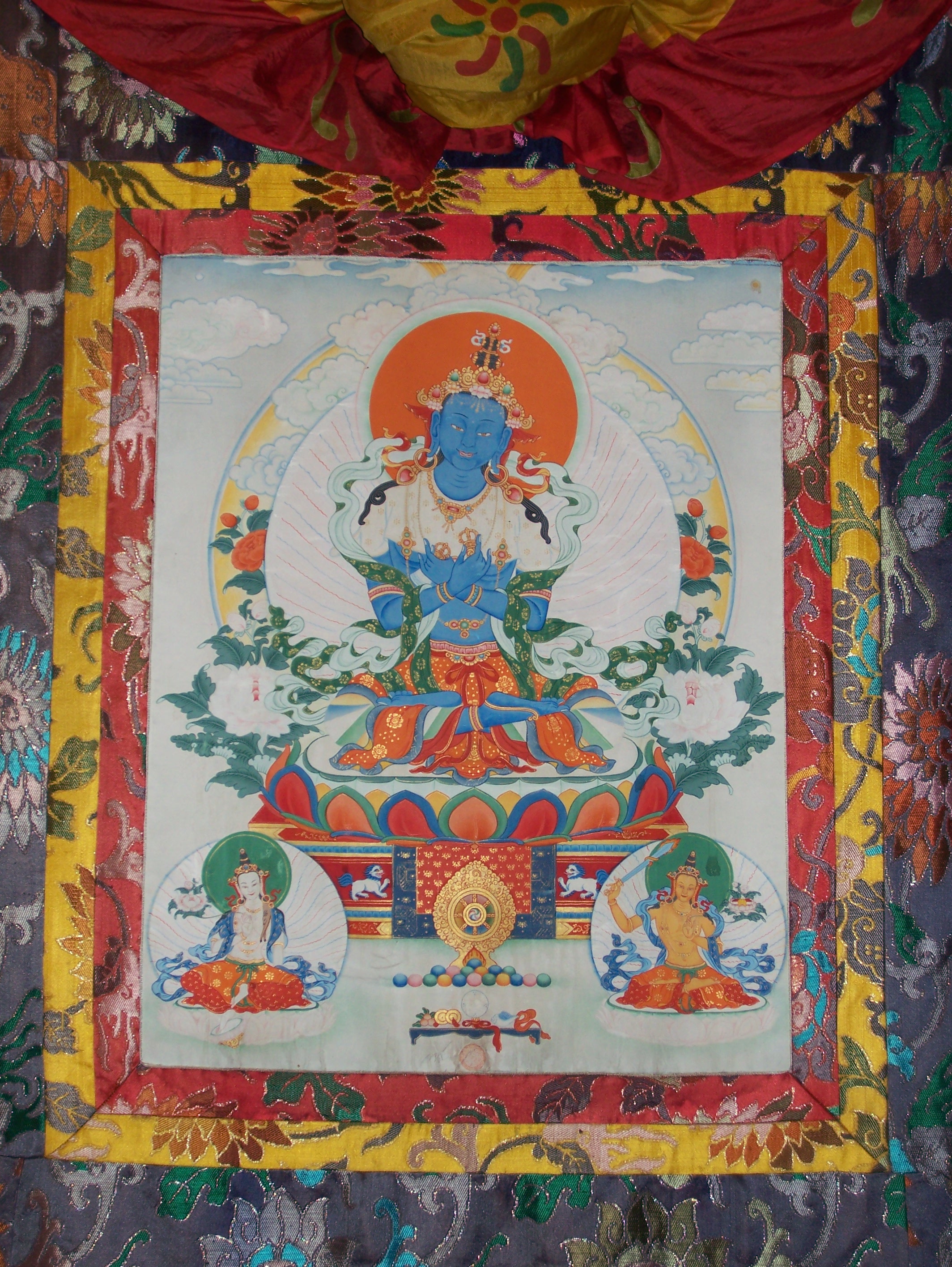|
Choijin Lama Temple
The Choijin Lama Temple ( mn, ą¦ąŠą╣ąČąĖąĮ ą╗ą░ą╝čŗąĮ čü껹╝; Official name given by Manchu Qing Emperor Guangxu (1871 ŌĆō 1908): mn, ė©čĆčłė®ė®ą╗ąĖą╣ą│ čģė®ą│ąČę»ę»ą╗菹│čć čü껹╝, ; mnc, ''Gosimbin Jadenblh juktenen'', , English; Compassion Perfection Temple, Chinese:Ķłłõ╗üÕ»║) is a Buddhist monastery in Ulaanbaatar, the capital of Mongolia. The complex consists of six temples originally occupied by the brother of the ruler the Eighth Bogd Jetsun Dampa Khan, Choijin Lama Luvsankhaidav, who was the state oracle and 'Precious Wisdom and Clear Devotion' Khutugtu at the time. The complex was begun in 1904 and completed in 1908, in honor of the State Oracle Lama Lubsanhaidub /Losang Kedrup/, brother of the eighth Bogd Khan. The Choijin Lama Museum was originally a Buddhist temple complex, consisting of one main and five branch temples. It was active until 1937, when it was closed during the height of Communist repression against Buddhism and other religious traditions. In 1938 ... [...More Info...] [...Related Items...] OR: [Wikipedia] [Google] [Baidu] |
Ulaanbaatar
Ulaanbaatar (; mn, ąŻą╗ą░ą░ąĮą▒ą░ą░čéą░čĆ, , "Red Hero"), previously anglicized as Ulan Bator, is the capital and most populous city of Mongolia. It is the coldest capital city in the world, on average. The municipality is located in north central Mongolia at an elevation of about in a valley on the Tuul River. The city was originally founded in 1639 as a nomadic Buddhist monastic center, changing location 28 times, and was permanently settled at its current location in 1778. During its early years, as ├¢rg├Č├Č (anglicized as Urga), it became Mongolia's preeminent religious center and seat of the Jebtsundamba Khutuktu, the spiritual head of the Gelug lineage of Tibetan Buddhism in Mongolia. Following the regulation of Qing-Russian trade by the Treaty of Kyakhta in 1727, a caravan route between Beijing and Kyakhta opened up, along which the city was eventually settled. With the collapse of the Qing Empire in 1911, the city was a focal point for independence efforts, leading ... [...More Info...] [...Related Items...] OR: [Wikipedia] [Google] [Baidu] |
Mahasiddha
Mahasiddha (Sanskrit: ''mah─üsiddha'' "great adept; ) is a term for someone who embodies and cultivates the " siddhi of perfection". A siddha is an individual who, through the practice of s─üdhan─ü, attains the realization of siddhis, psychic and spiritual abilities and powers. Mahasiddhas were practitioners of yoga and tantra, or ''tantrika''s. Their historical influence throughout the Indian subcontinent and the Himalayas was vast and they reached mythic proportions as codified in their songs of realization and hagiographies, or namtars, many of which have been preserved in the Tibetan Buddhist canon. The Mahasiddhas are the founders of Vajrayana traditions and lineages such as Dzogchen and Mahamudra. Robert Thurman explains the symbiotic relationship between Tantric Buddhist communities and the Buddhist universities such as Nalanda which flourished at the same time. Genealogy and historical dates The exact genealogy and historical dates of the Mahasiddhas are contentiou ... [...More Info...] [...Related Items...] OR: [Wikipedia] [Google] [Baidu] |
Buddhist Monasteries In Mongolia
Buddhism ( , ), also known as Buddha Dharma and Dharmavinaya (), is an Indian religion or philosophical tradition based on teachings attributed to the Buddha. It originated in northern India as a -movement in the 5th century BCE, and gradually spread throughout much of Asia via the Silk Road. It is the world's fourth-largest religion, with over 520 million followers (Buddhists) who comprise seven percent of the global population. The Buddha taught the Middle Way, a path of spiritual development that avoids both extreme asceticism and hedonism. It aims at liberation from clinging and craving to things which are impermanent (), incapable of satisfying ('), and without a lasting essence (), ending the cycle of death and rebirth (). A summary of this path is expressed in the Noble Eightfold Path, a training of the mind with observance of Buddhist ethics and meditation. Other widely observed practices include: monasticism; " taking refuge" in the Buddha, the , and the ; ... [...More Info...] [...Related Items...] OR: [Wikipedia] [Google] [Baidu] |
Buddhism In Ulaanbaatar
Buddhism ( , ), also known as Buddha Dharma and Dharmavinaya (), is an Indian religion or philosophical tradition based on teachings attributed to the Buddha. It originated in northern India as a -movement in the 5th century BCE, and gradually spread throughout much of Asia via the Silk Road. It is the world's fourth-largest religion, with over 520 million followers (Buddhists) who comprise seven percent of the global population. The Buddha taught the Middle Way, a path of spiritual development that avoids both extreme asceticism and hedonism. It aims at liberation from clinging and craving to things which are impermanent (), incapable of satisfying ('), and without a lasting essence (), ending the cycle of death and rebirth (). A summary of this path is expressed in the Noble Eightfold Path, a training of the mind with observance of Buddhist ethics and meditation. Other widely observed practices include: monasticism; " taking refuge" in the Buddha, the , and the ; ... [...More Info...] [...Related Items...] OR: [Wikipedia] [Google] [Baidu] |
S├╝khbaatar Square
S├╝khbaatar Square ( mn, ąĪę»čģą▒ą░ą░čéą░čĆčŗąĮ čéą░ą╗ą▒ą░ą╣, pronounced ''S├╝khbaatariin Talbai'') is the central square of Mongolia's capital Ulaanbaatar. The square was named for Mongolian's revolutionary hero Damdin S├╝khbaatar after his death in 1923. The square's name was changed to Chinggis Square ( mn, ą¦ąĖąĮą│ąĖčüąĖą╣ąĮ čéą░ą╗ą▒ą░ą╣, pronounced ''Chinggisiin Talbai'') in 2013 in honor of Genghis Khan, considered the founding father of Mongolia, but the original name was restored in 2016. The center of the plaza features an equestrian statue of Damdin S├╝khbaatar, while a large colonnade monument dedicated to Genghis Khan, as well as to ├¢gedei Khan and Kublai Khan, dominates the square's north face directly in front of the Saaral Ordon (Government Palace). Buildings Government Palace (built in 1951 on the spot formally occupied by the national theater or "Green Domed Theater") dominates the north side of the square. It is fronted by a large colonnade monument to Genghis ... [...More Info...] [...Related Items...] OR: [Wikipedia] [Google] [Baidu] |
Yurt
A yurt (from the Turkic languages) or ger ( Mongolian) is a portable, round tent covered and insulated with skins or felt and traditionally used as a dwelling by several distinct nomadic groups in the steppes and mountains of Central Asia. The structure consists of a flexible angled assembly or latticework of wood or bamboo for walls, a door frame, ribs (poles, rafters), and a wheel (crown, compression ring) possibly steam-bent as a roof. The roof structure is sometimes self-supporting, but large yurts may have interior posts supporting the crown. The top of the wall of self-supporting yurts is prevented from spreading by means of a tension band which opposes the force of the roof ribs. Yurts take between 30 minutes and 3 hours to set up or take down, and are generally used by between five and 15 people. Nomadic farming with yurts as housing has been the primary life style in Central Asia, particularly Mongolia, for thousands of years. Modern yurts may be permanently built ... [...More Info...] [...Related Items...] OR: [Wikipedia] [Google] [Baidu] |
Zanabazar
├¢nd├Čr Gegeen Zanabazar, , , "High Saint Zanabazar"; 1635ŌĆō1723 (born Eshidorji) was the sixteenth '' Jebtsundamba Khutuktu'' and the first ''Bogd Gegeen'' or supreme spiritual authority, of the Gelugpa (Yellow Hat) lineage of Tibetan Buddhism in Mongolia. The son of a Mongol T├╝sheet Khan, Zanabazar was declared spiritual leader of Khalkha Mongols by a convocation of nobles in 1639 when he was just four years old. The 5th Dalai Lama (1617ŌĆō1682) later recognized him as the reincarnation of the Buddhist scholar Taranatha and bestowed on him the Sanskrit name ''J├▒─ünavajra'' (Sanskrit: Óż£ÓźŹÓż×ÓżŠÓż©ÓżĄÓż£ÓźŹÓż░, ''Zanabazar'' in Mongolian) meaning "thunderbolt scepter of wisdom". Over the course of nearly 60 years, Zanabazar advanced the Gelugpa school of Buddhism among the Mongols, supplanting or synthesizing Sakya or " Red Hat" Buddhist traditions that had prevailed in the area, while strongly influencing social and political developments in 17th century Mongolia. His clos ... [...More Info...] [...Related Items...] OR: [Wikipedia] [Google] [Baidu] |
Shakti
In Hinduism, especially Shaktism (a theological tradition of Hinduism), Shakti (Devanagari: ÓżČÓżĢÓźŹÓżżÓż┐, IAST: ┼Üakti; lit. "Energy, ability, strength, effort, power, capability") is the primordial cosmic energy, female in aspect, and represents the dynamic forces that are thought to move through the universe. She is thought of as creative, sustaining, as well as destructive, and is sometimes referred to as auspicious source energy. Shakti is sometimes personified as the creator goddess, and is known as "Adi Shakti" or "Adi Parashakti" ("inconceivableprimordial energy"). In Shaktism, Adi Parashakti is worshipped as the Supreme Being. On every plane of creation, energy manifests itself into all forms of matter; these are all thought to be infinite forms of Parashakti. She is described as ''anaadi'' (with no beginning, no ending) and ''nitya'' (forever). Origins One of the oldest representations of the goddess in India is in a triangular form. The Baghor stone, found in a ... [...More Info...] [...Related Items...] OR: [Wikipedia] [Google] [Baidu] |
Vajradhara
Vajradhara (Sanskrit: ÓżĄÓż£ÓźŹÓż░Óż¦Óż░. (Also, the name of Indra, because 'Vajra' means diamond, as well as the thunderbolt, anything hard more generally) Tibetan: ÓĮóÓŠĪÓĮ╝Ó╝ŗÓĮóÓŠŚÓĮ║Ó╝ŗÓĮĀÓĮåÓĮäÓ╝Ź rdo rje 'chang (Dorje Chang); zh, t=ķćæÕēøńĖĮµīü, p=J─½ng─üng zŪÆng ch├Ł; Javanese: Kabajradharan; Japanese: µīüķćæÕēøõ╗Å; English: Diamond-holder; Vietnamese: Kim Cang Tß╗Ģng Tr├¼) is the ultimate primordial Buddha, or Adi-Buddha, according to the Sakya, Gelug and Kagyu schools of Tibetan Buddhism. In the evolution of Indian Buddhism, Buddha Vajradhara gradually displaced Samantabhadra, who is the 'Primordial Buddha' in the Nyingma, or 'Ancient School.' However, the two are metaphysically equivalent. Achieving the 'state of Vajradhara' is synonymous with complete realisation. According to the Kagyu lineage, Buddh─ü Vajradhara is the primordial Buddha, the Dharmakaya Buddha. He is depicted as dark blue in color, expressing the quintessence of buddhahood itself and representing ... [...More Info...] [...Related Items...] OR: [Wikipedia] [Google] [Baidu] |
